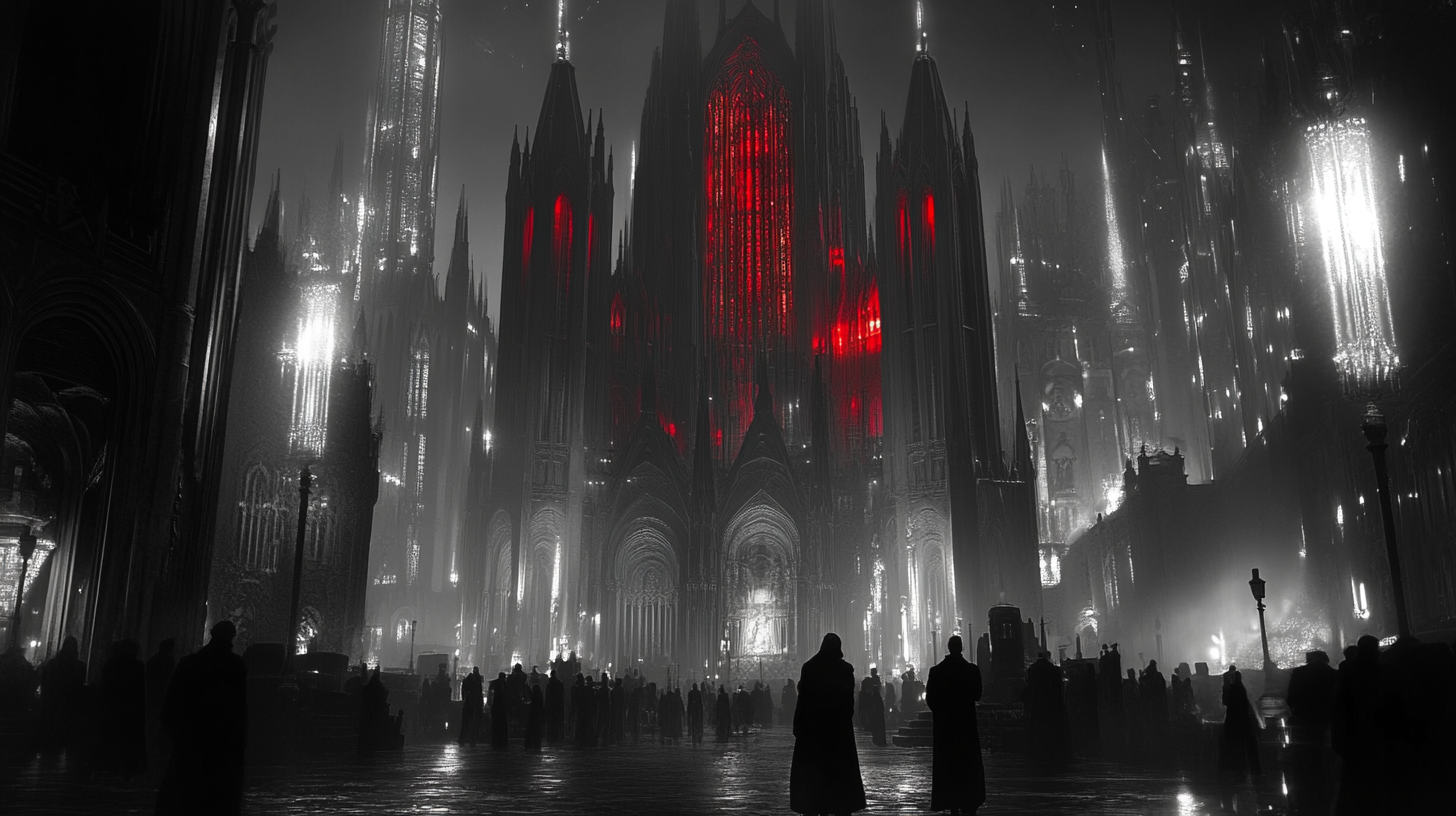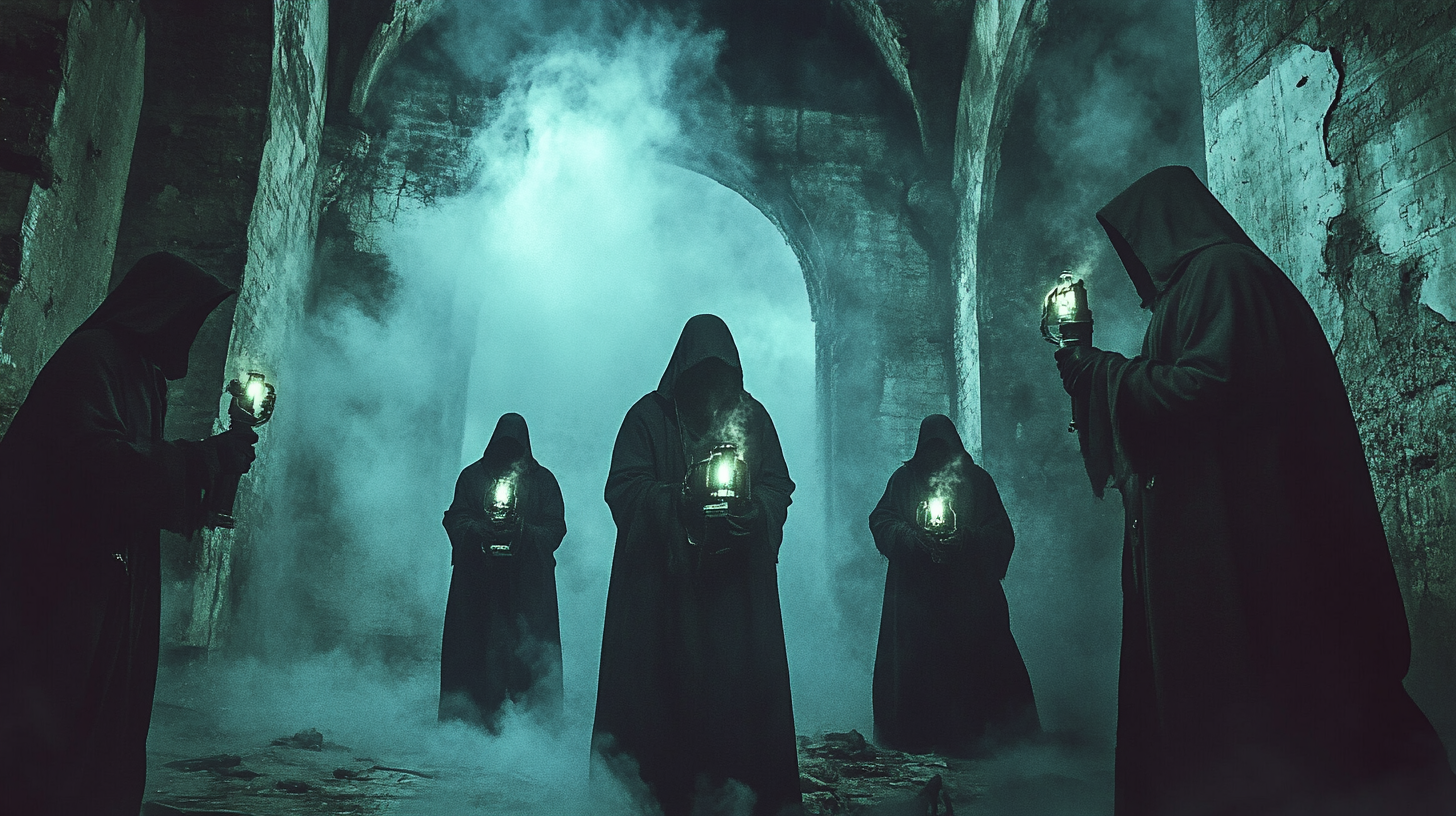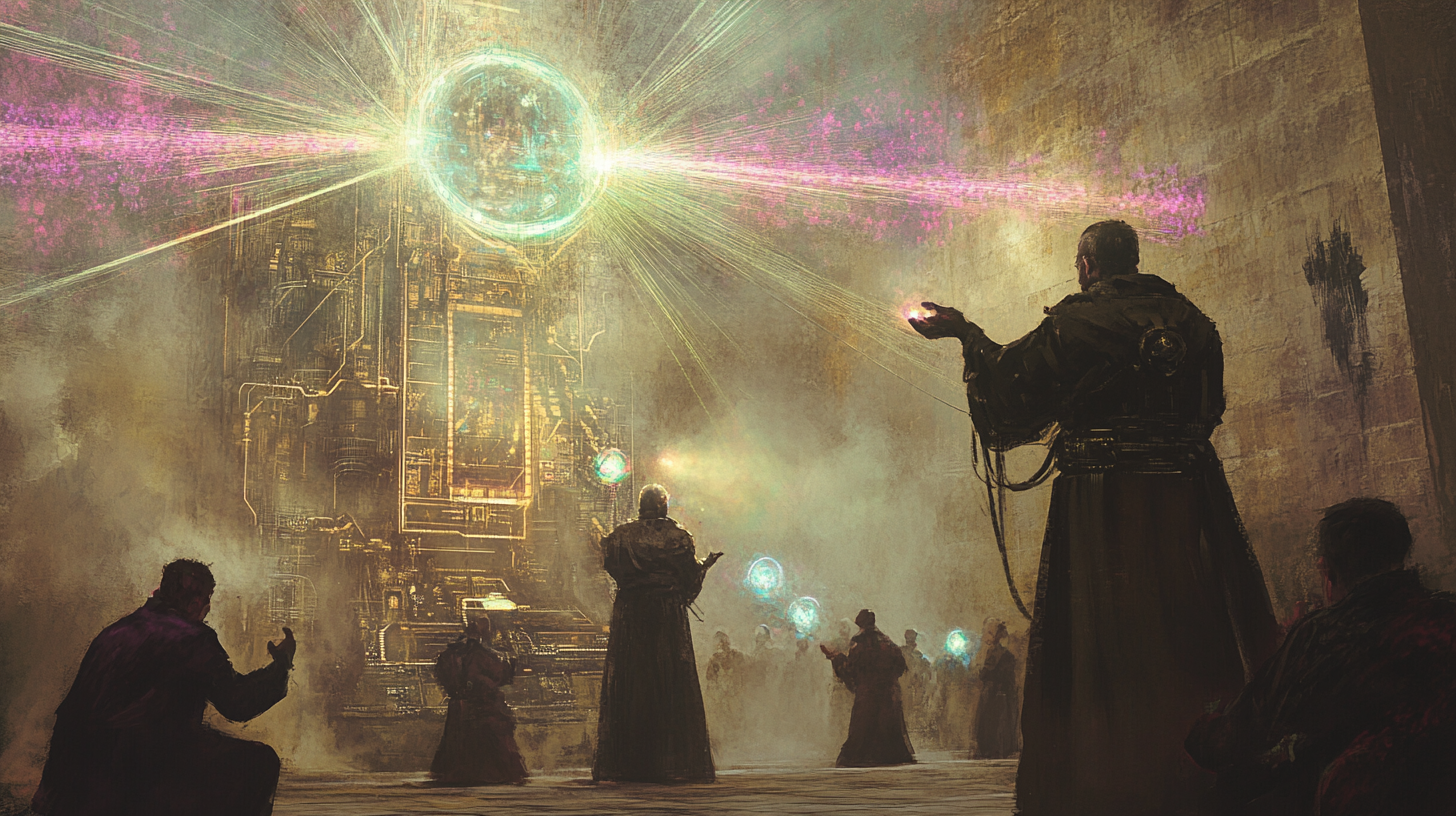"Gather, Darkness!" Blends Science and Sorcery in a Dystopian Future
Fritz Leiber’s "Gather, Darkness!" explores power, illusion, and rebellion in a theocratic future where science masquerades as miracle and truth flickers beneath layers of engineered belief.

Fritz Leiber's reputation as one of speculative fiction's most intellectually agile writers is well-earned.
While many of his contemporaries in the Golden Age prioritized technological extrapolation or space-faring adventure, Leiber often turned inward—toward the structures of belief, perception, and control. His 1943 novel "Gather, Darkness!" is a prime example of this inward gaze rendered on a societal scale. Originally serialized in "Astounding Science Fiction," the story arrived during a period when the genre was evolving beyond rocket ships and ray guns, stretching instead toward deeper philosophical and political territory.
"Gather, Darkness!" presents a future where organized religion has merged with technocracy, cloaking scientific control beneath the vestments of priestly authority. The result is a theocratic order that appears miraculous on the surface, yet beneath it hums the cold machinery of deception and engineered compliance. Within this setting, Leiber crafts a tale of rebellion, masquerade, and the contested ground between enlightenment and obedience.
The novel does not merely imagine a distant future—it interrogates the human impulse to dominate through ideology, whether sacred or secular. Its speculative structure supports a sharp political allegory that reflects both the anxieties of the Second World War and the age-old struggle between spiritual truth and institutional power.
Eighty years after its publication, "Gather, Darkness!" continues to provoke questions. Does Leiber's fusion of science and sorcery retain its power in our age of algorithmic persuasion and engineered consensus? This review seeks to answer that question—by dissecting the book's world, its ideas, and the cunning machinery of its narrative design.
World-Building as Ideological Architecture
Fritz Leiber builds the world of "Gather, Darkness!" with exacting care, shaping a society where belief is engineered and obedience enforced through spectacle. The setting is more than just the stage on which the action unfolds. It is an active force that reflects and reinforces the novel's central concerns—chief among them, the manipulation of truth through controlled appearances.
At the center of this society stands the Hierarchy, a priesthood that commands its flock not through divine inspiration but through concealed technology. The ruling class performs what appear to be miracles—light from heaven, voices from nowhere, punishments delivered by invisible forces. In reality, these are mechanical marvels hidden beneath robes and relics. The average citizen is kept in ignorance, trained to revere what he cannot comprehend. Leiber uses this duplicity not only to drive the plot but also to expose the machinery of ideological control.

The visual design of this world is deliberate. The architecture of the ruling order draws from the Middle Ages, with towering cathedrals, somber vestments, and relics that suggest holiness but conceal circuitry. Leiber surrounds these ornate structures with a crumbling urban sprawl—one filled with hunger, suspicion, and decay. The contrast between sacred illusion and material squalor underscores the fragility of the entire system.
This society does more than suppress dissent. It closes off the inquiry itself. The world Leiber constructs is not just authoritarian. It is intellectually sealed. Knowledge is rationed. Doubt is punished. Truth is whatever the Hierarchy allows to be seen.
In "Gather, Darkness!" the setting carries a moral weight. It is not simply a place. It is an argument made concrete. Through this world, Leiber challenges the reader to recognize how power hides behind ritual and how easily science, when stripped of openness, can be used to enslave rather than enlighten.
The Machinery of Rebellion
The world of "Gather, Darkness!" is held together by illusion, but it is not unchallenged. Beneath the ritual and radiance of the ruling priesthood, there stirs a countermovement—one that mirrors the Hierarchy's tactics while turning their message inside out. Leiber presents this underground rebellion with care, crafting a force that is neither purely noble nor entirely rogue. The rebels understand that to oppose a lie sustained by spectacle, they must fight with symbols of their own.
The resistance adopts the imagery of superstition. Cloaked in mystery, its members present themselves not as scientists or rationalists but as sorcerers and witches. This inversion is deliberate. Leiber shows that when belief has been corrupted by control, truth must sometimes wear a mask to be heard. The rebellion does not merely seek to dismantle the system. It seeks to outmaneuver it using the same tools—illusion, theater, and the manipulation of awe.
What makes this counterforce compelling is not just its strategy, but its ambiguity. Leiber does not offer easy heroes. He presents a conflict where each side wields deception, though with different ends in mind. The rebels operate in shadow, often indistinguishable from the very power they oppose. This complexity adds to the story's strength and avoids the simplistic morality found in lesser works.
The true battle in "Gather, Darkness!" is not between science and faith, but between coercion and clarity. Leiber's rebels understand that ideas cannot win on merit alone. They must first be seen, heard, and felt. That understanding gives the novel its pulse.

Through this machinery of rebellion, Leiber poses a difficult question. If spectacle can serve both tyranny and freedom, what separates the oppressor from the liberator? The answer, he suggests, may lie in who controls the light—and why.
Leiber's Voice: Tone, Language, and Structure
Fritz Leiber's style in "Gather, Darkness!" reflects a mind trained in both drama and philosophy. His background in theater lends the prose a sense of staging and timing. Scenes unfold with a measured rhythm, and dialogue is used sparingly, often to reveal intent rather than emotion. He writes with clarity, favoring sharp description over ornament. Every phrase serves the larger structure.
Unlike some of his contemporaries, Leiber does not depend on page-long lectures or forced exposition to convey his ideas. Instead, he layers meaning through setting, action, and implication. The book's vocabulary is rich but not obscure. Scientific terminology is used precisely, never gratuitously. Religious and symbolic language appears only when it reinforces the characters' roles in the social order. The result is a narrative voice that is restrained, but never dry.
Leiber's use of structure is equally deliberate. The novel unfolds in carefully plotted turns, each stage advancing both the external conflict and the internal dilemmas of its characters. Chapters often close on scenes of ambiguity or decision, compelling the reader forward not through cliffhangers but through rising complexity. There is no indulgent meandering. The pacing is lean.
The tone, while serious, is not solemn. Leiber permits moments of irony and even bitter humor, particularly when exposing the absurdities of false sanctity. These touches provide contrast without undercutting the tension. His control of tone ensures the story remains anchored in its themes even when the narrative veers into spectacle.
In "Gather, Darkness!" the style itself becomes a kind of rebellion. Leiber resists the florid excesses of early pulp and instead offers a disciplined, focused voice—one suited to a story about the use and misuse of knowledge.
Light Against the Veil
"Gather, Darkness!" is more than a tale of rebellion against a corrupt priesthood. It is a story about the very nature of perception, and the danger that arises when power dictates what can be known. Even after eight decades, the novel retains its bite. Its relevance has not faded. If anything, the questions it raises feel more immediate.
Leiber does not hand the reader a moral conclusion. He offers a layered parable, one where both sides of the conflict use the tools of illusion to shape belief. The story challenges the reader to consider not only who controls knowledge, but also why control is desired in the first place. In this way, the novel becomes a reflection on propaganda, spectacle, and the blurred line between leadership and manipulation.
The novel's refusal to simplify its characters or causes is a mark of its maturity. This is not a battle of saints against villains. It is a contest between competing visions of order—one that hides truth in robes, and another that hides rebellion in shadows. The struggle is not clean. It is human.
For readers today, "Gather, Darkness!" offers more than historical interest. It offers insight into the cycles of control that appear wherever knowledge becomes exclusive, and doctrine replaces understanding. Leiber's blend of political tension, symbolic inversion, and speculative daring places the book firmly within the highest tradition of science fiction—not as escapism, but as interrogation.
In the end, the light in "Gather, Darkness!" is not divine. It is the light of inquiry, flickering through layers of concealment. Leiber's achievement lies in showing how hard that light is to protect, and how necessary it is to defend.

